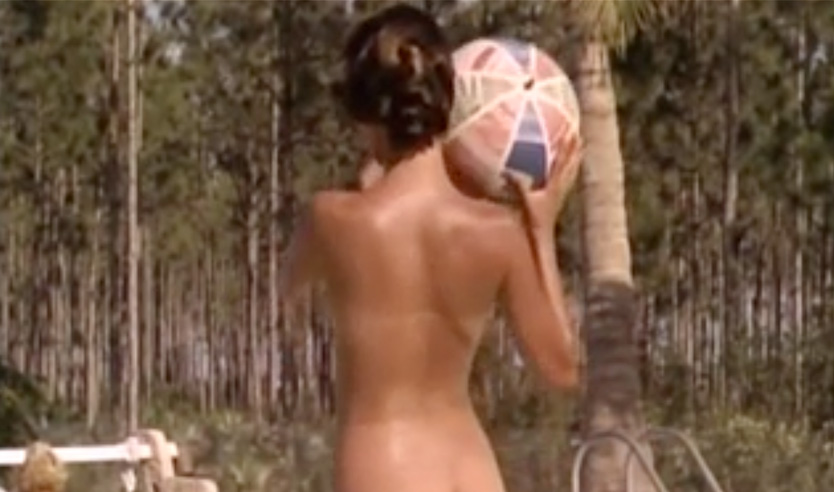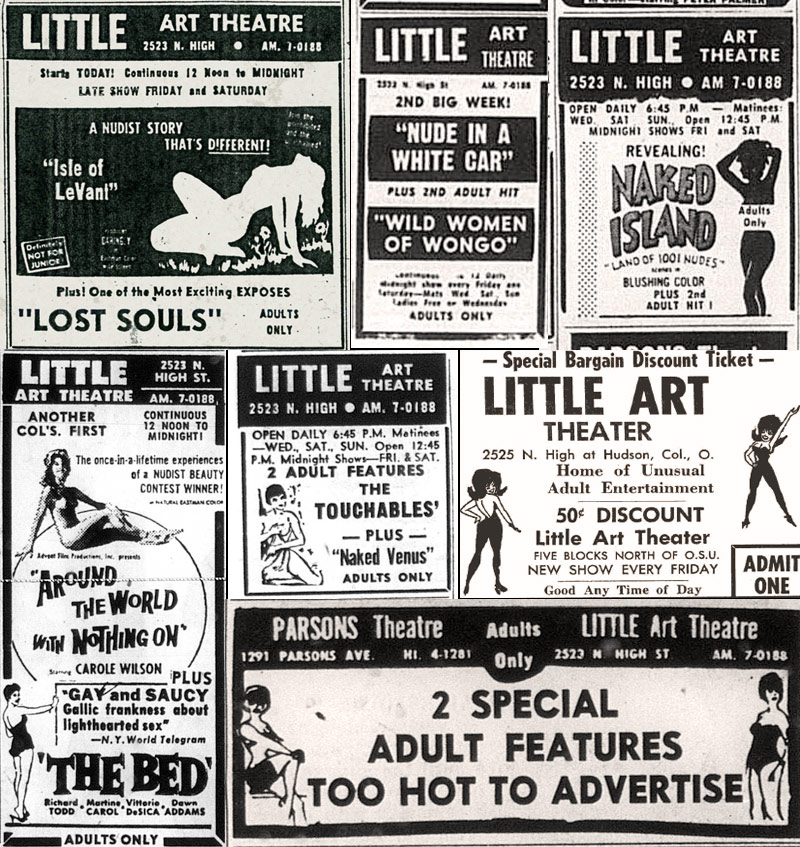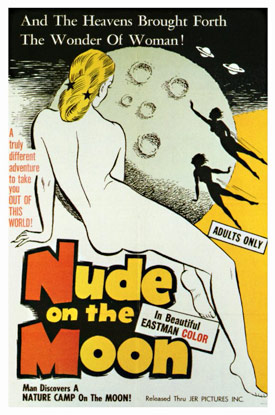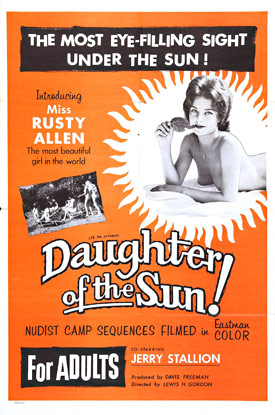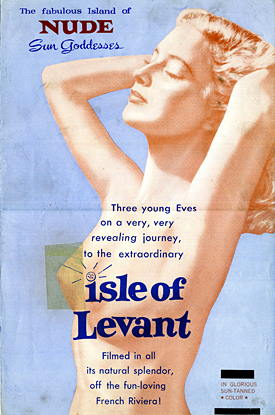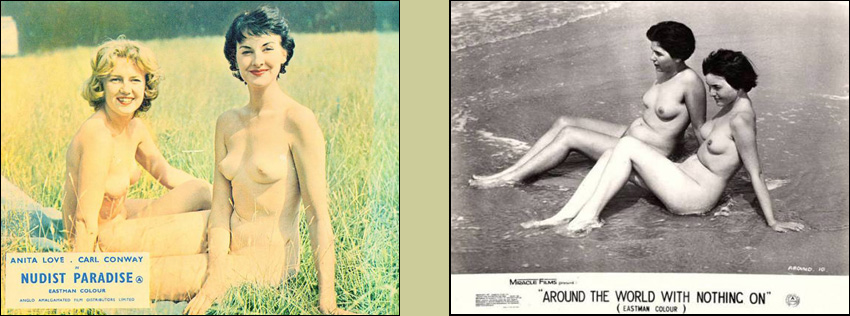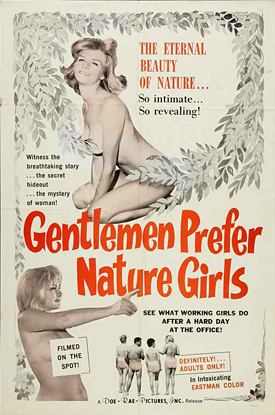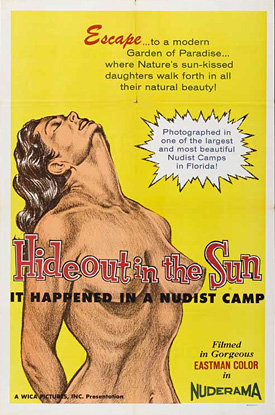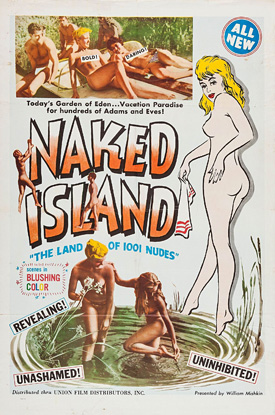| THE LITTLE ART THEATER- The campus home of early 1960s sexploitation films | ||||||||||||
In the early 1960s, the Little Art Theater, 2523 N. High (about where O’Reilly Auto Parts is today), was the campus home for nudist exploitation features. The Little Art Theater opened as the Piccadilly way back in 1918. It may have some connection to the Crystal Theater nearby, the very first motion picture theater in the University District. The Piccadilly showed pictures from the era of the silents right up through the Golden Age of Hollywood. In 1940, it became The Olentangy and, in 1949, after briefly going as The World (before that name moved south down High St. to the former Alhambra) changed its name to The Little Art Theater. In the late 1940s, something happened. Television came along. Movie attendance plummeted. Box office crashed. Theater after theater closed as audiences stayed home to watch I Love Lucy and Arthur Godfrey’s Talent Scouts on their new TVs. Small neighborhood theaters were especially hard hit. For dying theaters to survive, they had to find a niche. They had to offer theatergoers something they couldn’t get on their TV sets at home. For theaters like The Little Art, that something was nudity.
In 1954, a picture called Garden of Eden, was released. The story of an abused war widow who finds freedom and happiness in a nudist colony, Garden of Eden featured abundant nudity and met with numerous censorship efforts. Garden of Eden’s producers fought back. In 1957, in Excelsior Pictures Corporation vs. Regents of the State University of New York, the courts ruled that filmed nudity was not inherently obscene, so long as it was not complete and its purpose wasn’t solely to titillate.
The floodgates opened and America was soon awash in nudist pictures.
The pictures told stories that had to be told and just happened to demand a nudist camp setting in order to tell the story. There were nudist exposés (The Nudist Racket Exposed, Nature Camp Confidential), nudist advocacy (Gentlemen Prefer Nature Girls), nudist musicals (Goldilocks and the Three Bares), nudist historical romances (My Bare Lady), stories about robbers who hide out in nudist camps (Hideout in the Sun), nudist spy movies (Behind the Nude Curtain), outer space nudists (Nude on the Moon), celebrity nudists (The Wild Wild World of Jayne Mansfield, Blaze Starr Goes Nudist), nudist travelogues (Naked As Nature Intended, Isle of Levant), even nudists vs. monsters (Monster of Camp Sunshine). Demand for nudist-sploitation feature was so brisk that director Doris Wishman made a career out of nudist films, producing eight of them between 1960 and 1964. And The Little Art profitably exhibited them all.
The nudie-cutie trend played itself out by the mid-1960s and gave way to stronger stuff. The Little Art followed suit and was soon exhibiting X-rated features. By the 1970s, the city decided the theater was a blight on the neighborhood and attempted to use code enforcement to shut it down. The theater owners fought the action in the courts and took it all the way to the US Supreme Court. But that's another story... |
||||||||||||

|

